The season of Djilba

In the south-west of Western Australia the Noongar people follow a yearly calendar with six seasons: Birak, Bunuru, Djeran, Makuru, Djilba and Kambarang.

Signs of Djilba
Djilba signals the end of the coldest part of the year and heralds the start of sunnier days, still with some wet periods in between. Djilba is usually from August to September. It's a time of growth, with the cream and yellow flowers starting off the flowering season. Baby animals emerge with their parents, while the woodland birds such as the djiti-djiti (Willy Wagtail) and koolbardie (Australian Magpie) protect their nests.
My observations
When I first returned from my overseas trip it was very evident how cold the nights were and the short days, especially in comparison to the northern hemisphere's. Each week the temperatures rose and daylight stretched. Ultimately, it turned out to be the warmest August on record for Western Australia. It did make me wonder if spring is arriving earlier this year and what the signs to look out for are, and when they would typically occur. I also wondered if Australia was going to switch to having an El Niño weather pattern? (Yes.)
There was still rain and storms, however not as much as before, and it was a dry month for August, below average rainfall for all of Australia. Still enough to have the backyard become a bit of a jungle!


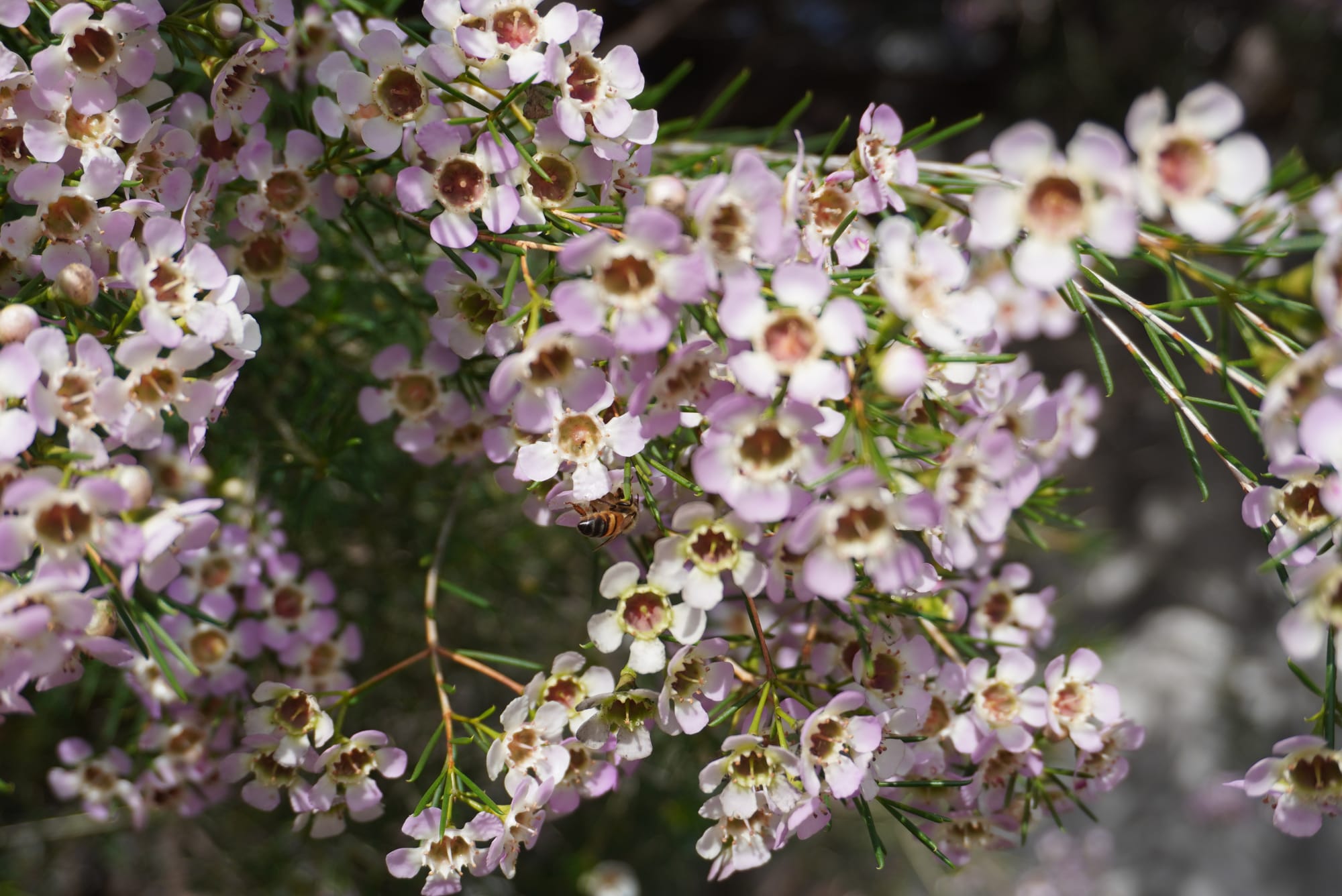

The backyard was buzzing.
I noticed yellow wattle, the pink and purple Geraldton waxes and red bottlebrushes flowering around the suburbs. Another sight that was difficult to miss was the plague of black, hairy caterpillars everywhere (yet I somehow don't have a single photo of one 🤨). Weeds took advantage of the wet, cool weather and I added the burr medic's yellow flowers to my perpetual journal. (After some research I realised this isn't a bindii, but I grew up calling any spiky lawn weed that, and I think I do have them in the lawn too.)

Ducklings and cygnets started appearing around the Herdsman Lake Discovery Centre (where I work casually now). For the first time I saw Great Crested Grebes, and even observed them displaying to each other with pondweed. The blue-billed duck called to the females, puffing out its throat, its stiff tail noticeable.



Duck families at Herdsman Lake
I felt reminded that summer was approaching and of my Inktober the previous year when I studied the wattle and other plants. This was probably because I was outside a lot during that time, noticing my environment even more than usual. Last year I had also noticed the wildflowers in much more detail because of the Inktober challenge, so when I went on bushwalks this year, spotting them felt familiar and I was keen to discover new ones or see when they appeared in different areas. I saw pink fairies, yellow donkey orchids and purple sun orchids. Kangaroo paws were almost at their peak flowering, and the beautiful but invasive weed gladioli was everywhere too.


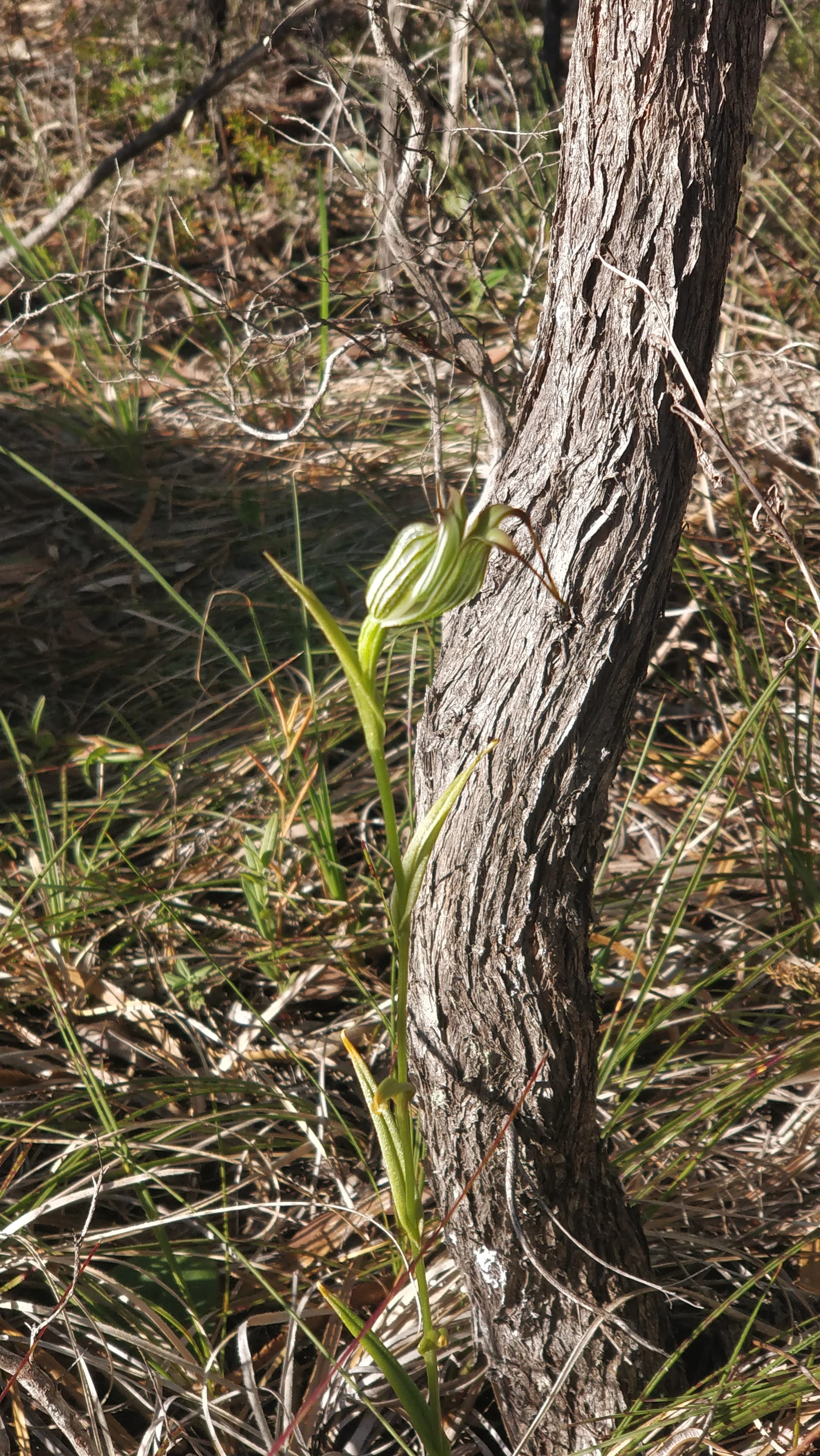
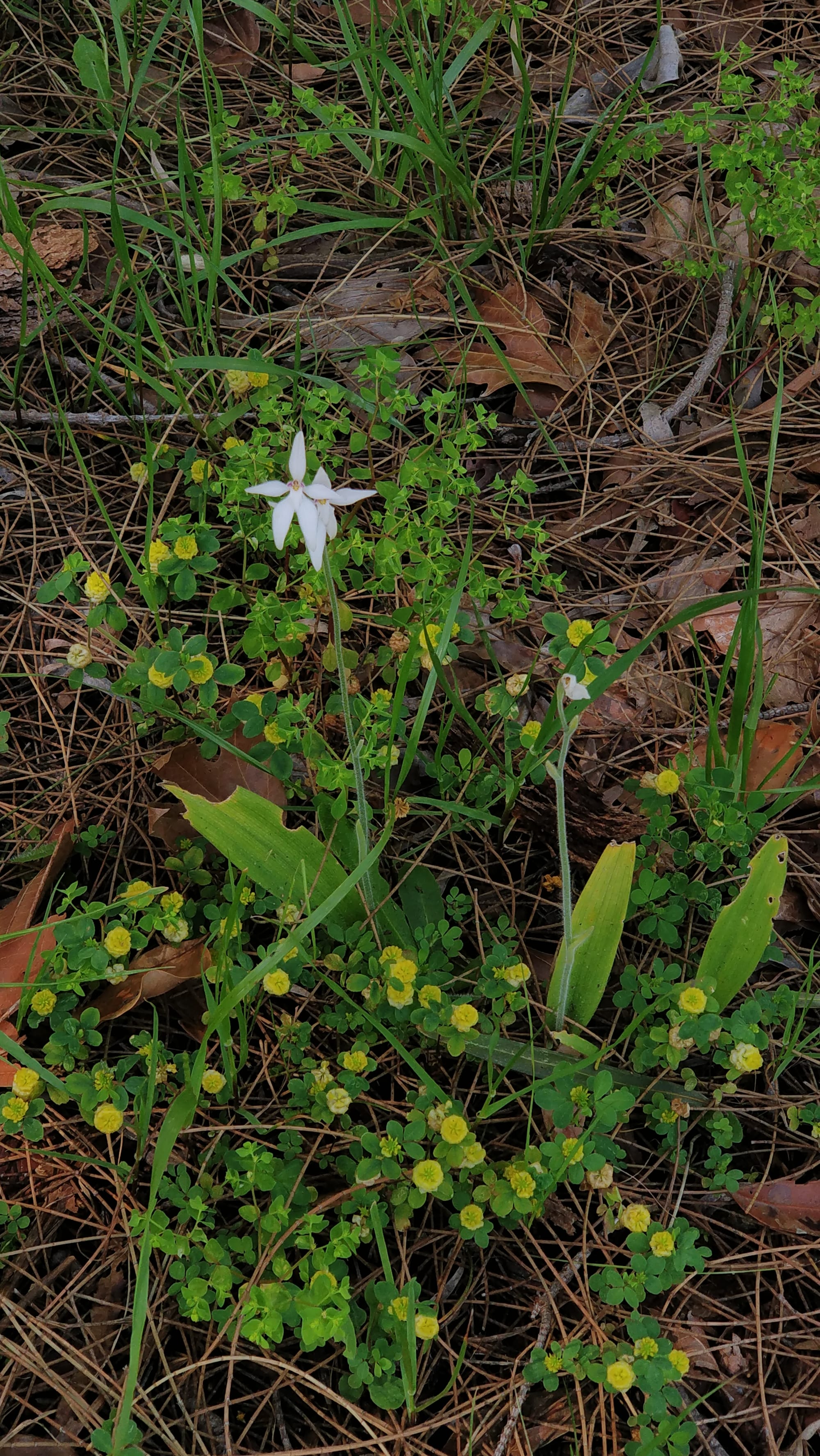


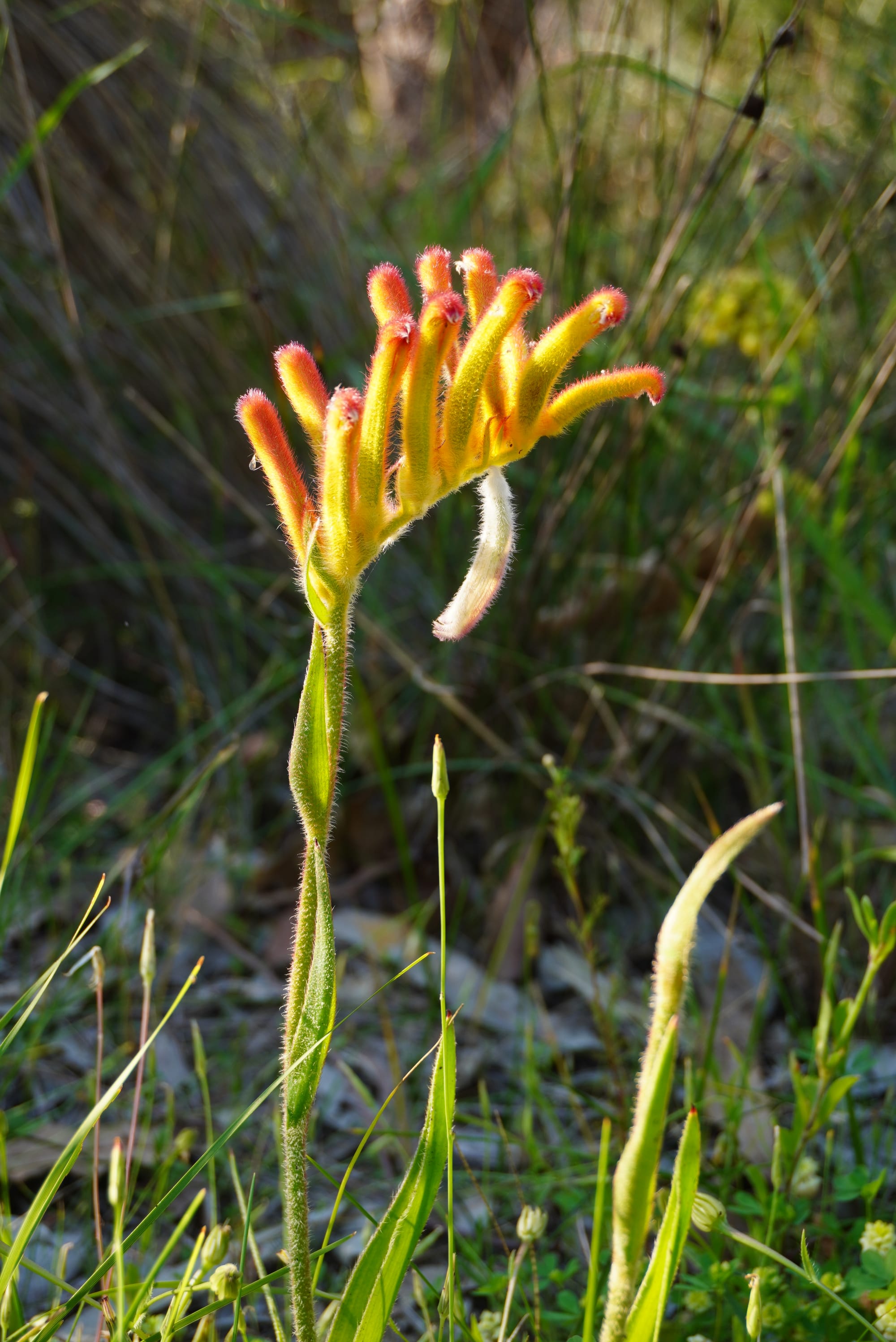


Wildflowers out in force in the bushland.
In my nature journal
I didn't do as much sketching as I would have liked this season, especially considering the wildflowers, however kept notes of what I was observing:

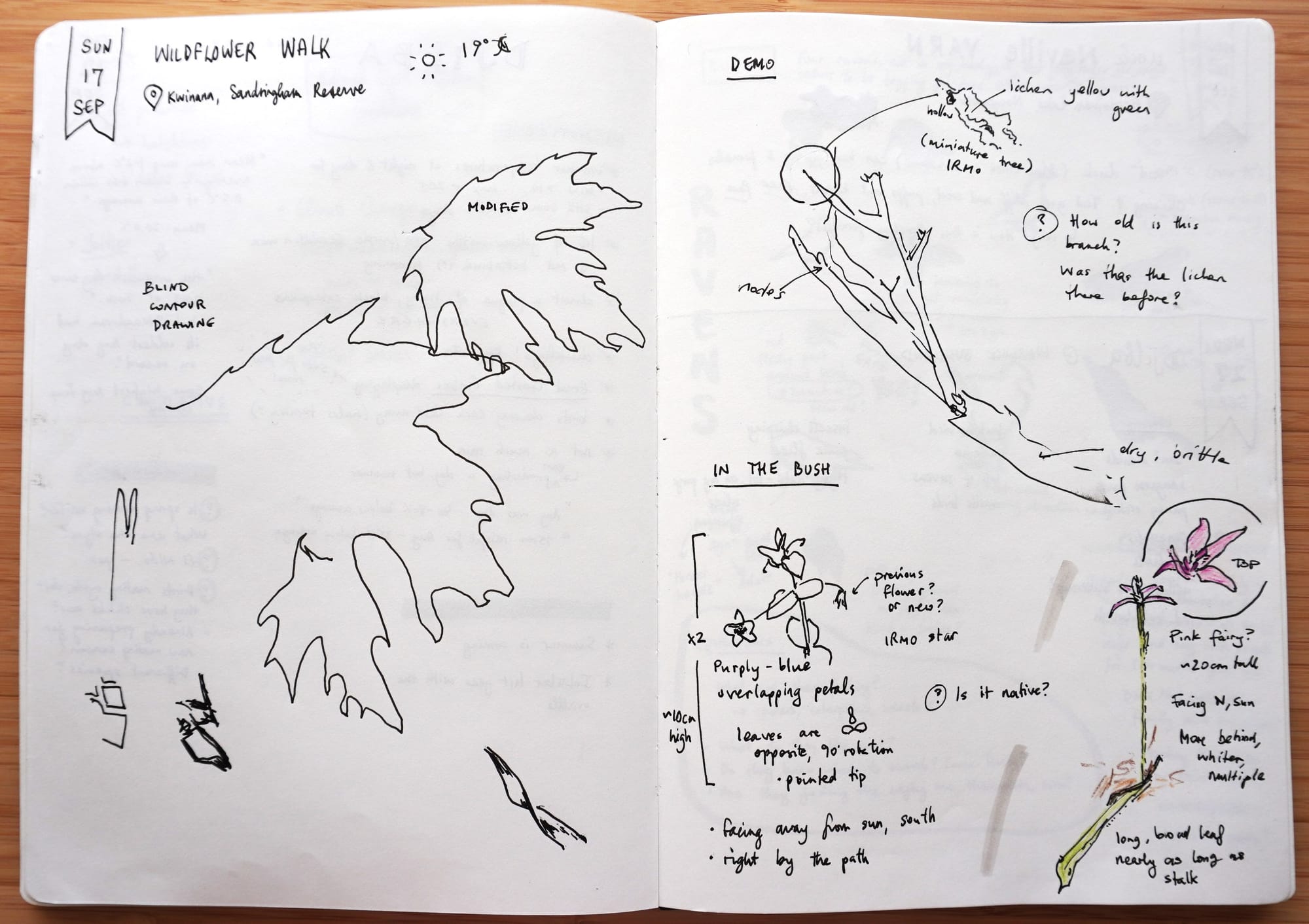

Nature journal pages during Djilba.
Discussion
Is there a particular flower that signals spring to you? What do you know about where to find it and when it begins to blossom?

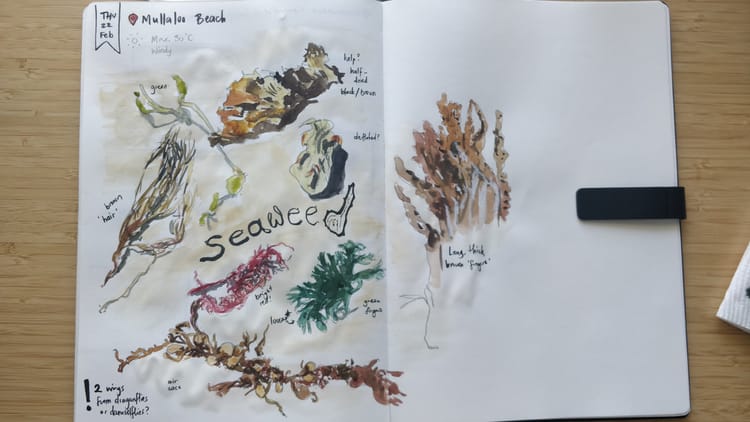
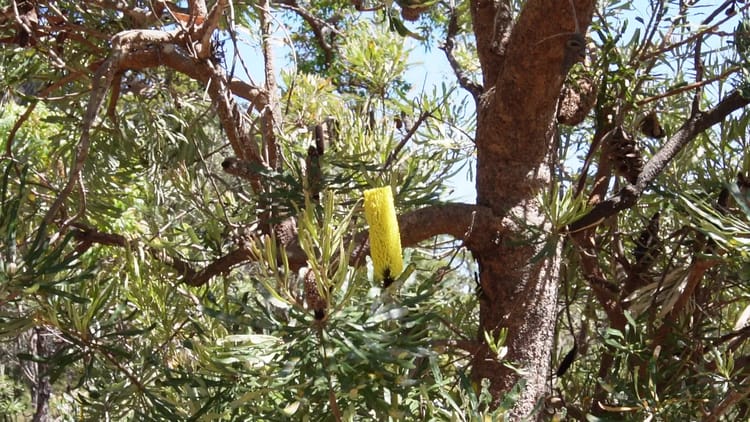


Member discussion